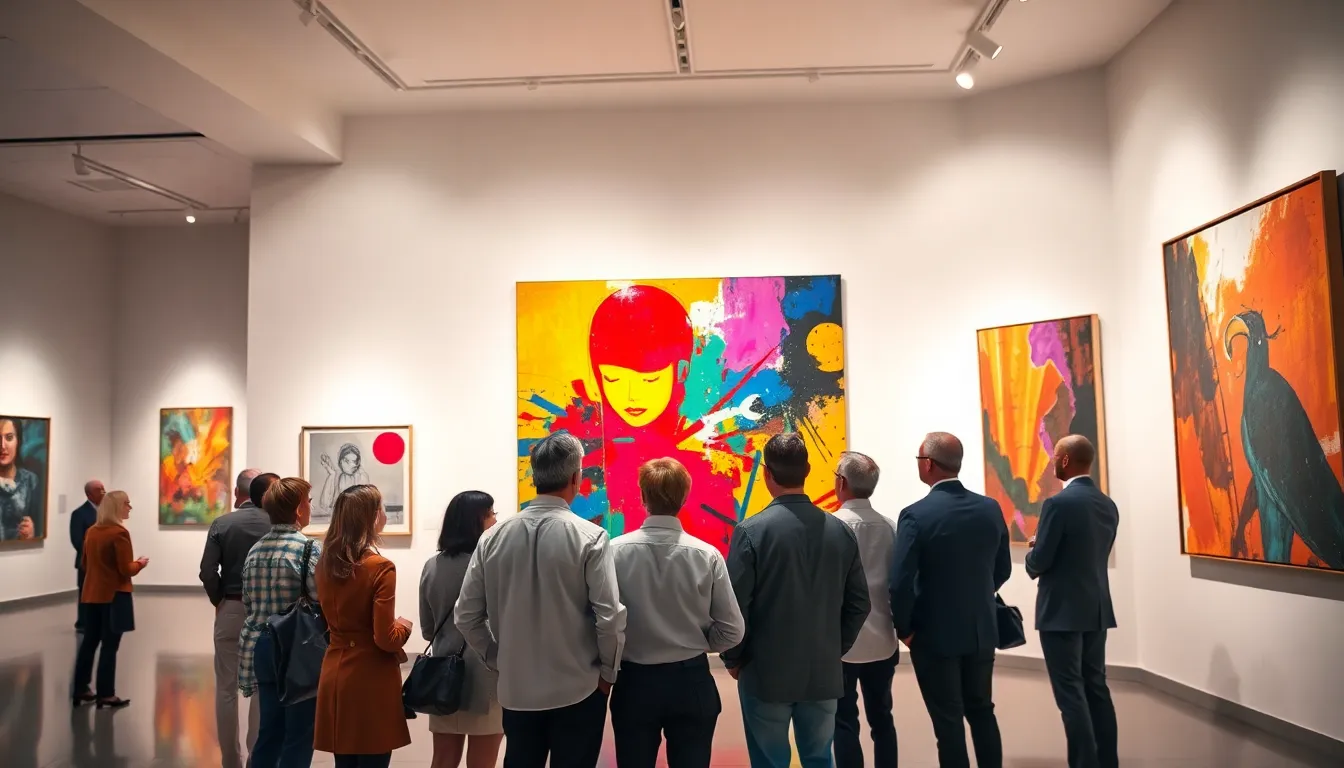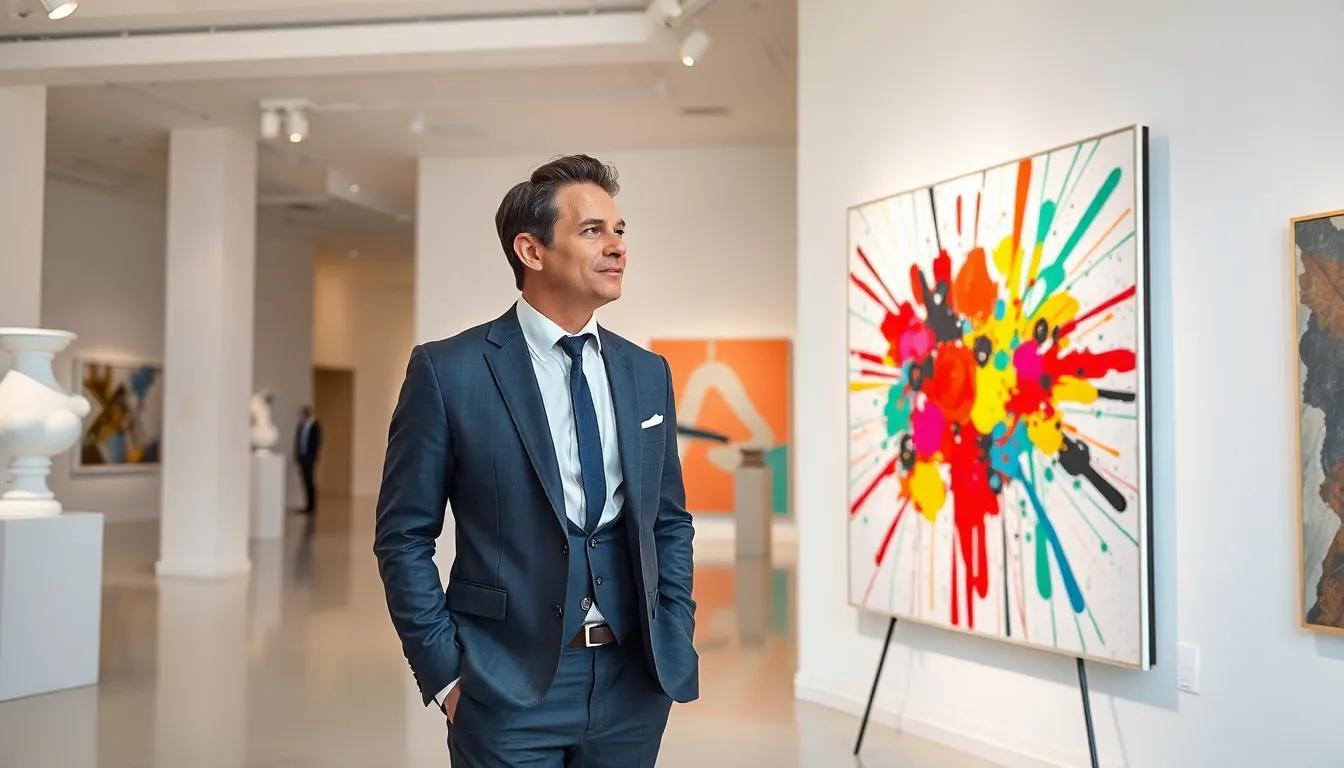In the vibrant world of modern art, where splashes of color often overshadow the serious business behind the canvas, a shadowy game of money laundering lurks. Imagine a Picasso worth millions, not just for its artistic brilliance but as a clever disguise for illicit cash. It’s a trend that’s turning art galleries into the hottest spots for financial shenanigans, where connoisseurs might just be fronting for something a bit more nefarious than a love of abstract expressionism.
As art collectors and money launderers collide, the lines between creativity and criminality blur. This isn’t just a tale of brush strokes and bold statements; it’s a high-stakes drama where the stakes are as high as the price tags. Buckle up as we dive into the colorful chaos of modern art money laundering, where every stroke could be hiding a secret and every gallery could be a front for something far more interesting.
Table of Contents
ToggleOverview of Modern Art Money Laundering
Modern art money laundering involves the use of valuable artworks to conceal the origins of illegally obtained funds. Artworks by renowned artists can significantly inflate in value, making them prime tools for laundering schemes. High-profile examples include pieces worth millions, such as those by Picasso or Basquiat, which serve as both status symbols and vehicles for financial misconduct.
Art galleries increasingly act as facilitators in this process. Transactions often lack stringent oversight, allowing illicit activities to thrive. Buyers and sellers sometimes engage in non-transparent dealings that obscure true ownership and the provenance of the artworks. Prices can be manipulated through auctions or private sales, creating opportunities for money laundering.
Criminal networks exploit these blurred lines between legitimate art transactions and financial crimes. The lack of regulatory scrutiny in the art market makes it susceptible to manipulation. Investigations reveal links to organized crime, with artworks serving as vehicles for transferring wealth across borders.
As digital art gains traction, including NFTs, new challenges emerge. The anonymity of blockchain transactions presents a unique avenue for laundering money. Evaluating these transactions becomes more complex, as they can be obscured behind digital wallets and pseudonymous identities.
Furthermore, the art market’s global nature complicates enforcement efforts. Different jurisdictions may have varying regulations, creating loopholes that criminals can exploit. Consequently, authorities face difficulties in tracing illicit funds back to their origins, increasing the risks associated with modern art financial practices.
Mechanisms of Money Laundering in the Art Market


Money laundering in the art market involves complex methods that exploit the nuances of high-value transactions. Understanding these mechanisms reveals the vulnerabilities within this sector.
Role of Art Galleries
Art galleries often act as conduits for money laundering, facilitating transactions without rigorous oversight. They may provide inflated appraisals, allowing artworks to change hands at artificially high prices. When galleries engage in non-transparent dealings, they obscure the true ownership and provenance of pieces. The lack of regulatory scrutiny further enables illicit activities, as galleries can connect buyers and sellers without disclosing complete transaction details. Criminals often leverage this environment to integrate illicit funds into the legitimate economy by purchasing high-value artworks, effectively disguising the origins of their money.
Auction Houses as Facilitators
Auction houses serve critical roles in modern art money laundering by enabling sales with minimal transparency. Auctions often attract wealthy individuals, creating a veil of legitimacy around transactions. Bidding wars can artificially inflate prices, benefiting sellers and obscuring the actual value of the art. Anonymity in bidding allows buyers to remain hidden while acquiring expensive pieces. Additionally, auction houses may lack thorough due diligence processes, allowing criminals to exploit these sales for laundering purposes. By facilitating these questionable transactions, auction houses inadvertently contribute to the growing challenges of regulating the art market.
Case Studies of Notable Incidents
Several notable incidents exemplify the connection between modern art and money laundering, revealing the complexities of this illicit activity.
Case Study 1: The $100 Million Painting
A high-profile sale of a painting by a renowned artist fetched $100 million, raising suspicions among authorities. This acquisition involved multiple shell companies, obscuring the true identity of the buyer. Experts identified the artwork’s sudden price surge as part of a scheme to integrate illicit funds into the legitimate economy. Further investigation uncovered ties to organized crime, demonstrating how a single sale can mask broad financial misconduct.
Case Study 2: The Shady Auction House
An auction house faced scrutiny when suspicious transactions came to light involving the sale of multiple artworks. Buyers received inflated appraisals, and artworks changed hands without documented provenance, raising red flags. Law enforcement discovered connections to money laundering operations, with artwork serving as a vehicle for transferring illegal funds. This case highlights the critical role of auction houses in facilitating opaque transactions that allow criminals to exploit the art market.
Legal and Regulatory Framework
The legal and regulatory environment surrounding modern art money laundering remains inadequate, allowing criminal activities to flourish. Many jurisdictions lack comprehensive laws specifically addressing art market practices, which creates opportunities for exploitation.
Key Regulations
- Anti-Money Laundering (AML) Laws
AML laws vary by country, with some nations enforcing stricter measures than others. For example, the European Union has implemented the Fifth Anti-Money Laundering Directive, requiring art dealers to conduct due diligence on customers and report suspicious transactions.
- Financial Action Task Force (FATF) Recommendations
FATF provides guidelines on combating money laundering and terrorist financing, including suggestions for the art market. Adopting these recommendations enhances transparency and accountability within art transactions.
- Know Your Customer (KYC) Policies
KYC policies are essential for art dealers and galleries, obligating them to verify the identities of buyers and sellers. Implementing these protocols can mitigate risks of accepting illicit funds.
Challenges in Implementation
- Lack of Enforcement
Many countries fail to enforce existing regulations in the art sector effectively. The subtlety of art transactions often hinders authorities from identifying and acting on suspicious activities.
- Opaque Market Practices
Art galleries and auction houses frequently engage in practices that obscure transaction details. The lack of standardized pricing and provenance documentation complicates regulatory scrutiny.
- Digital Art and NFTs
The rise of digital art, particularly NFTs, presents new regulatory challenges. The anonymity often associated with blockchain transactions complicates the tracing and verification of ownership and funds.
International Cooperation
Strengthening international cooperation among regulatory bodies is vital for addressing money laundering in the art market. Collaborative efforts enable the exchange of information and help standardize practices across jurisdictions, tightening loopholes that criminals exploit.
The evolving nature of both the art market and money laundering techniques necessitates continuous adaptation of legal frameworks to combat financial crimes effectively.
The intricate relationship between modern art and money laundering reveals a troubling reality within a seemingly vibrant industry. As valuable artworks become vehicles for illicit financial activities the art market’s vulnerabilities are laid bare. The lack of regulatory oversight coupled with the anonymity of transactions creates a fertile ground for criminal networks to thrive.
Addressing these challenges requires a concerted effort from regulatory bodies across the globe. Strengthening legal frameworks and enhancing transparency in art transactions are crucial steps toward curbing financial misconduct. As the art world continues to evolve especially with the rise of digital assets the importance of vigilance and proactive measures cannot be overstated. The future of the art market hinges on its ability to balance creativity with accountability.




